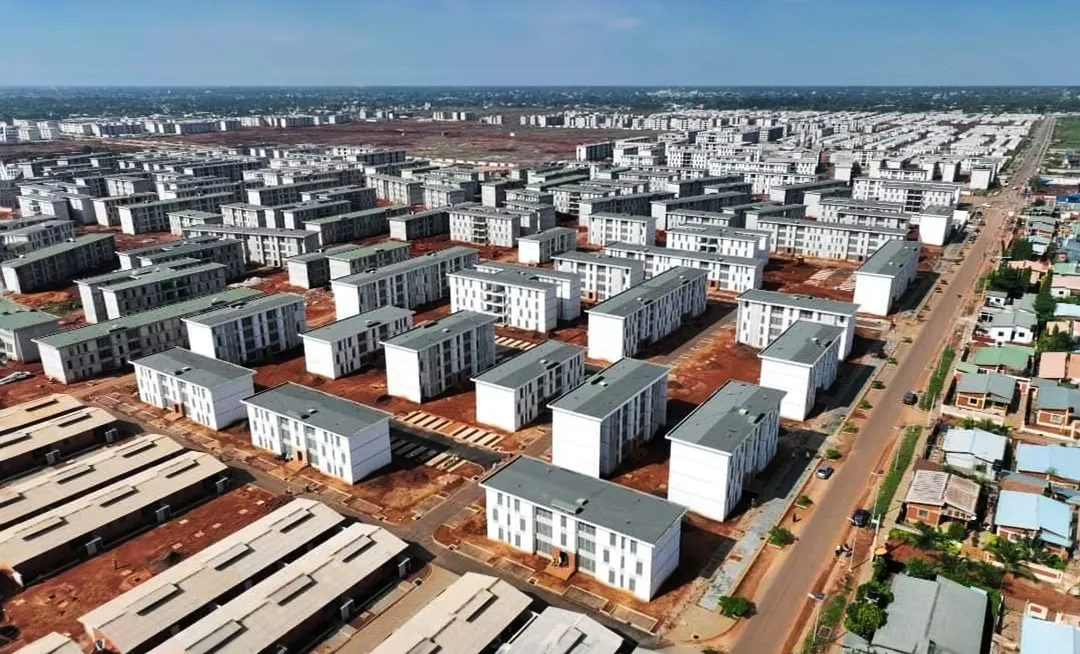The first black mayor of Tulsa, Oklahoma has actually unveiled an ambitious reparations prepare that would see more than $100 million purchased the descendants of the 1921 Tulsa Race Massacre.

Mayor Monroe Nichols revealed on Sunday that the city is opening a $105 million charitable trust consisting of private funds to resolve concerns including housing, scholarships, land acquisition and economic advancement for north Tulsans.

Of that cash, $24 million will approach housing and home ownership for the descendants of the attack that killed as numerous as 300 black individuals and razed 35 blocks, according to Public Radio Tulsa.
Another $21 million will money land acquisition, scholarship funding and financial development for the blighted north Tulsa community, and a tremendous $60 million will go toward cultural preservation to enhance buildings in the as soon as thriving Greenwood neighborhood.
'For 104 years, the Tulsa Race Massacre has actually been a stain on our city's history,' Nichols said at an occasion honoring Race Massacre Observance Day.
'The massacre was concealed from history books, just to be followed by the intentional acts of redlining, a highway developed to choke off financial vigor and the
perpetual underinvestment of regional, state and federal governments.
'Now it's time to take the next big steps to bring back.'
But the proposition will not consist of direct money payments to the last known survivors, Leslie Benningfield Randle and Viola Fletcher, who are 110 and 111 years old.
Mayor Monroe Nichols announced on Sunday that the city is opening a $105 million charitable trust comprising personal funds to address issues including housing, scholarships, land acquisition and financial development for north Tulsans
His strategy does not include direct money payments to the last recognized survivors,
Leslie Benningfield Randle (left) and Viola Fletcher (ideal), who are 110 and 111 years old. They are envisioned in 2021
They had been combating for reparations for several years, and previously this year their lawyer Damario Solomon-Simmons argued that any reparations prepare should include direct payments to the two survivors along with a victim's payment fund for impressive claims.
However, a claim Solomon-Simmons - who also founded the group Justice for Greenwood - was overruled in 2023 by an Oklahoma judge who stated the claimants 'do not have endless rights to settlement.'
The judgment was then maintained by the Oklahoma Supreme Court in 2015,
moistening racial justice supporters' hopes that the city would ever make monetary amends.
But after taking workplace previously this year, Nichols stated he reviewed previous proposals from regional community companies like Justice for Greenwood.
He then discussed his plan with the Tulsa City
Council and descendants of the massacre victims.
'What we wished to do was find a method in which we might take in a variety of these recommendations, so that it's reflective of the
descendant neighborhood, of the folks that produced some recommendations,' Nichols stated as he likewise vowed to continue to browse for mass graves thought to consist of victims of the massacre and release 45,000 formerly categorized city records.
No part of his
strategy would need city board approval, the mayor kept in mind, and any fundraising would be carried out by an executive director whose salary will be spent for by personal financing.

A Board of Trustees would likewise identify how to distribute the funds.

Still, the city council would need to license the transfer of any city residential or commercial property to the trust, something the mayor said was highly likely.
People take pictures at a Black Wall Street mural in the historic Greenwood neighborhood
He explained that a person of the points that truly stuck with him in these
conversations was the destruction of not just what
Greenwood was - with its dining establishments, theaters, hotels, banks and grocery shops - however what it could have been.
'The Greenwood District at its height was a center of commerce,' he told the Associated Press. 'So what was lost was not simply something from North Tulsa or the black neighborhood. It really robbed Tulsa of a financial future that would have rivaled anywhere else
worldwide.'
'You would have had the center of oil wealth here and the center of black wealth here at the exact same time,' he included his remarks to the Times. 'That would have made us an economic juggernaut and would have most likely made the city double in size.'

Many at Sunday's event stated they
supported the strategy, although it does not include cash payments to the 2 elderly survivors of the attack.
As many as 300 black people were killed in the 1921 Tulsa Race Massacre, which razed 35 blocks in the then-prosperous Greenwood neighborhood
The neighborhood was as soon as filled with dining establishments, theaters, hotels, banks and grocery shops before it was burned down
Chief Egunwale Amusan, a survivor descendant, for example, said the he has worked for half his life to get reparations.
'If [my grandfather] had actually been here today, it probably would have been the most corrective day of his life,' he informed Public Radio Tulsa.
Jacqueline Weary, a granddaughter of
massacre survivor John R. Emerson, Sr., who owned a hotel and cab business in Greenwood that were damaged, meanwhile, acknowledged the political trouble of giving money payments to descendants.
But at the exact same time, she questioned how much of her household's wealth was lost in the violence.
'If Greenwood was still there, my grandfather would still have his hotel,' stated Weary, 65.
'It truly was our inheritance, and it was actually taken away.'
A group of black were marched past the corner of 2nd and Main Streets in Tulsa, under
armed guard throughout the Tulsa Race Massacre on June 1, 1921
Nichols stated the area was once a center of commerce
The violence in 1921 appeared after a white lady told police that a black guy had grabbed her arm in an elevator in a downtown Tulsa industrial building on May 30, 1921.
The following day, cops jailed the male, who the Tulsa Tribune reported had tried to assault the female. White individuals surrounded the court house, demanding the male be handed over.
World War One veterans were among black males who went to the courthouse to face the mob. A white man tried to disarm a black veteran and a shot sounded out, touching off even more violence.
White people then robbed and burned structures and
dragged the black individuals from their beds and beat them, according to
historical accounts.

The white people were deputized by authorities and advised to shoot the black citizens.
No one was ever charged in the violence, which the federal government now categorizes as a 'collaborated military-style attack' by white citizens, and not the work of a rowdy mob.
